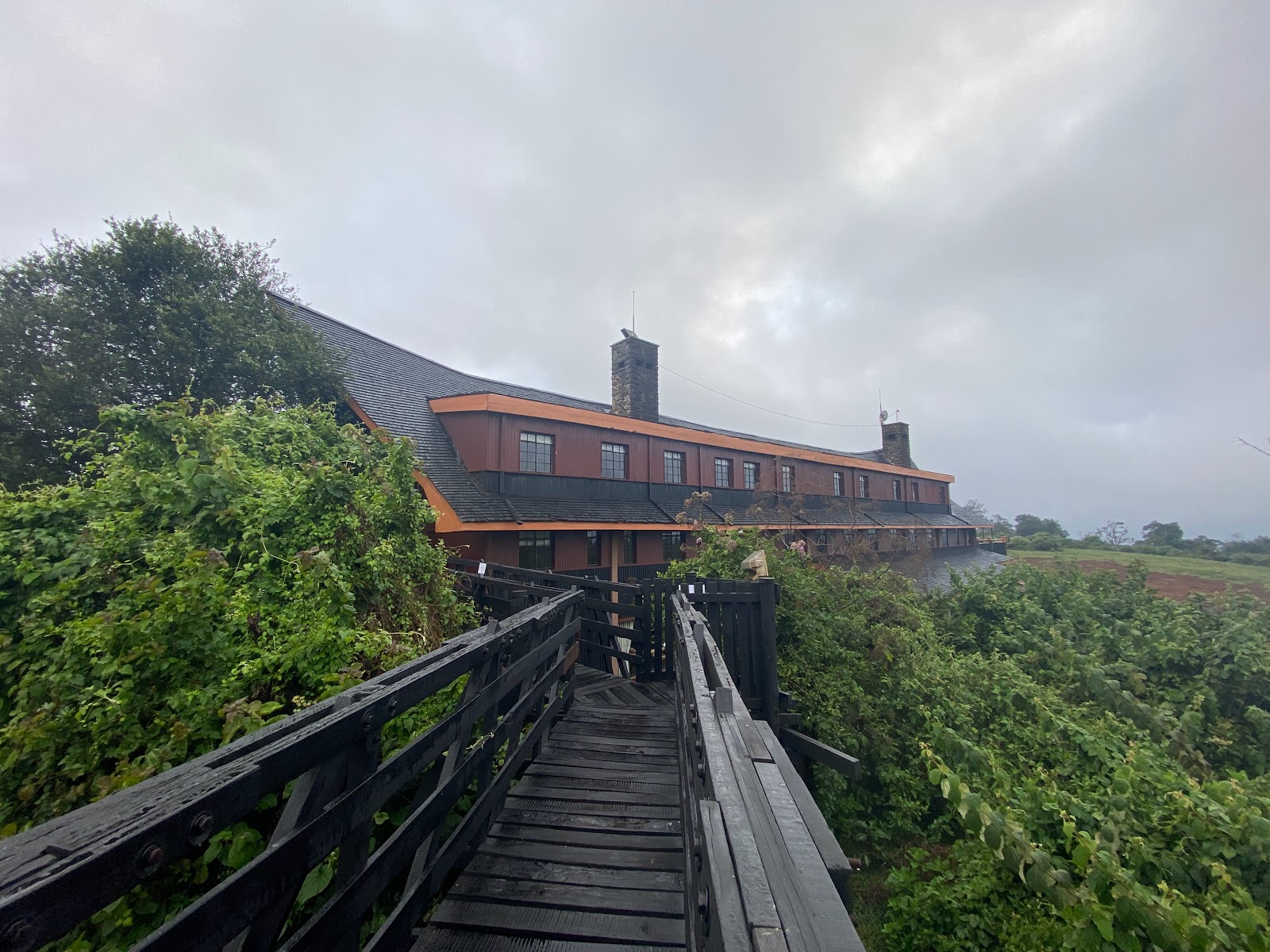For my third and final project at Mpala, I worked with Patrick, Gabby and Sami on plant physiology, morphology and photosynthesis!
The project studies whistling-thorn acacia trees (Image 1) and their coevolution/mutualism with different ant species that live in the domatia (swollen thorns) of the tree. With the research team I was working with, we examined the affects of different conditions on plant photosynthesis.
 |
| Image 1: A reed frog on a whistling-thorn acacia (you can see one of the domatia behind the frog) |
For this project, Patrick and I spent a lot of time in one of the Mpala greenhouses (Image 6). One thing that was really exciting about this project was that I got to design an experiment with Patrick and begin executing it, which is only something I had ever done on a small-scale in classes. In the greenhouse, there are 350 acacia saplings that we used as the subjects of our experiment (Image 4). Because acacia trees don't have a well-evolved, built-in dispersal mechanism in their reproductive evolution, the saplings often do not fall far from the mother tree and are shaded by her in their early development. Our experiment consisted of submitting saplings to one of three different conditions (Image 7): no shade, full shade (a cover of two layers of shade netting above them, which decreased the amount of sunlight exposure by ~67% PAR), and a partial shade/soil shade condition (one layer of shade netting covering only the soil: Image 3). After leaving the plants in these conditions, we used a CIRAS-3 to analyze how well each plant is photosynthesizing (Image 2). The CIRAS-3 has many features, including 4 gas-analyzers (Image 8) that allow the machine to take measurements such as water loss, CO2, PAR and much more for each plant. In order to make our measurements, we put leaves of the acacia trees in the chamber of the CIRAS-3 and allowed it to pump a designated amount of each kind of gas and light into the chamber (Image 5/9). It then used those known values as a reference for the outputs that are being measured as the plant processes the conditions that we prescribed. By the end of the experiment, I was amazed at how much the CIRAS-3 could do, and although I didn't even get to use all of its features, it was still easily the most powerful tool I have used in the field.
 |
| Image 2: The CIRAS-3 |
 |
| Image 3: The soil shade condition with a single shade net covering the soil |
 |
| Image 4: All 350 plant tags |
 |
| Image 5: One of the acacia leaves in the CIRAS-3 chamber |
 |
| Image 6: The Mpala greenhouse that we worked in |
 |
| Image 7: Patrick, Sami and I setting up the shade experiment |
 |
| Image 8: Front of the CIRAS-3, with the four gas-analyzing chambers |
 |
| Image 9: Our CIRAS-3 setup |
Another aspect of the project, which Gabby and Sami primarily worked on, was the assimilation of carbon in plants. In their experiments, they label different acacia trees with 13CO2, opposed to the normal 12CO2 that is in the atmosphere. In order to do this, Gabby and Sami put the trees in a large tent and pump 13CO2 into the tent. The tree utilizes this isotopic carbon in photosynthesis/respiration as usual, and then the tent is removed. What can then happen, is that the leaves, twigs, ants, soil, etc. can be sampled at different timepoints to determine where the plant is storing carbon over time (Image 10/11/12/14/15). Because the isotopic carbon can be detected in specific areas of the tree (as it is the only carbon that is detectably different than the 12CO2 that will otherwise be present) this experiment can provide key insights into how plants manage their CO2 over time. I was lucky enough to get the opportunity to shadow this project at Ol Pejeta Conservancy (Image 13) and help sample the trees that had been labeled! We sampled from labeled trees that were both in areas that were invaded and not invaded by the invasive big-headed ants (BHA). These ants, which are destructive to the local ecosystem, kill the existing native species of ants and therefore also damage the preexisting mutualism between the ants and the trees. A very important aspect of these projects has become studying the affects of BHA, and how to manage (and hopefully one day remove) their presence in the ecosystem.
 |
| Image 10: Collecting gas/air samples |
 |
| Image 11: Removing the gas/air from the sampling apparatus with a syringe |
 |
| Image 12: Collecting ants for sampling |
 |
| Image 13: The landscape at Ol Pejeta Conservancy |
 |
| Image 14: Collecting samples from leaves that have been preserved from influence from ants |
 |
| Image 15: Collecting soil samples to analyze them for 13CO2 content |
I gained a lot of new skills over the course of this last project and I'm glad that I was able to spend multiple weeks learning from my collaborators! After getting a feel for field work with the VGF team and then moving over to plant analysis with Dr. Melly, I felt like this was the perfect opportunity for me to utilize all of the skills I have learned. There's still some data analysis to be done on the project (which I will be able to do back in the US) but for now, I'm done with work at Mpala!
Now... on to the coast!





























































